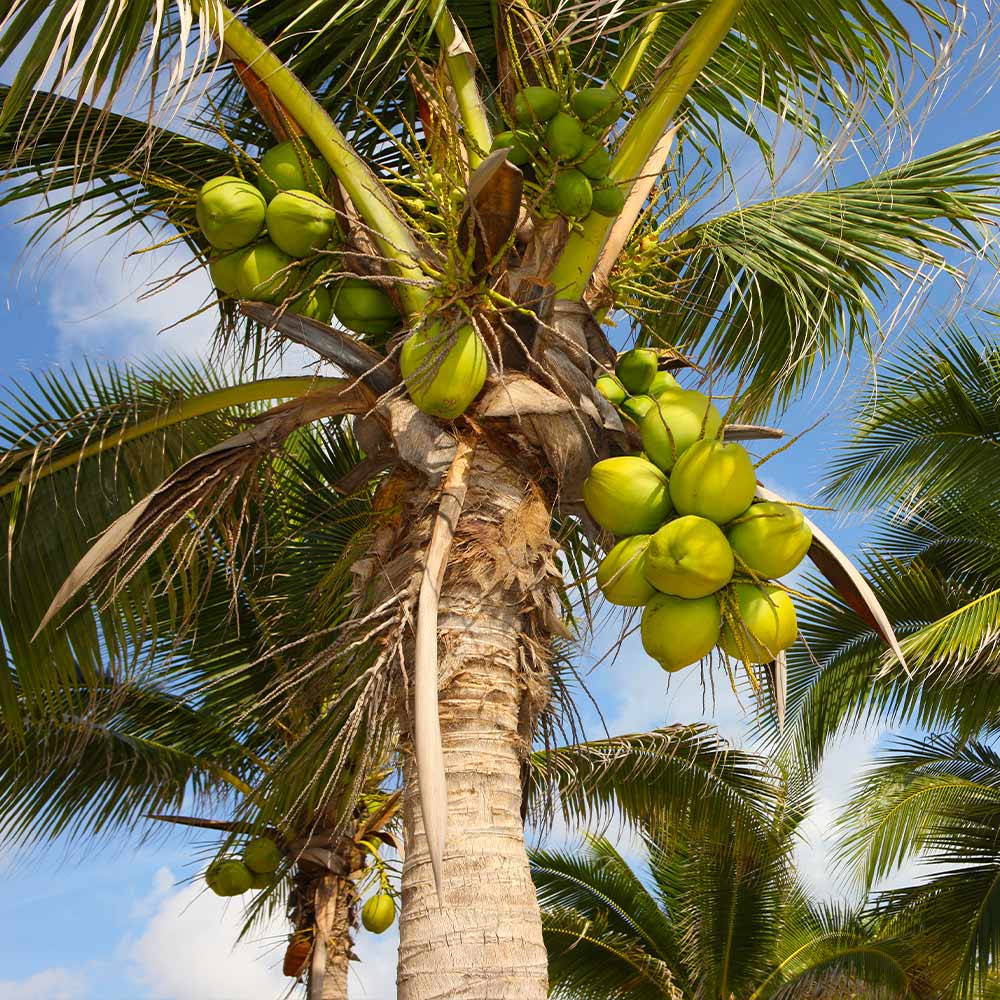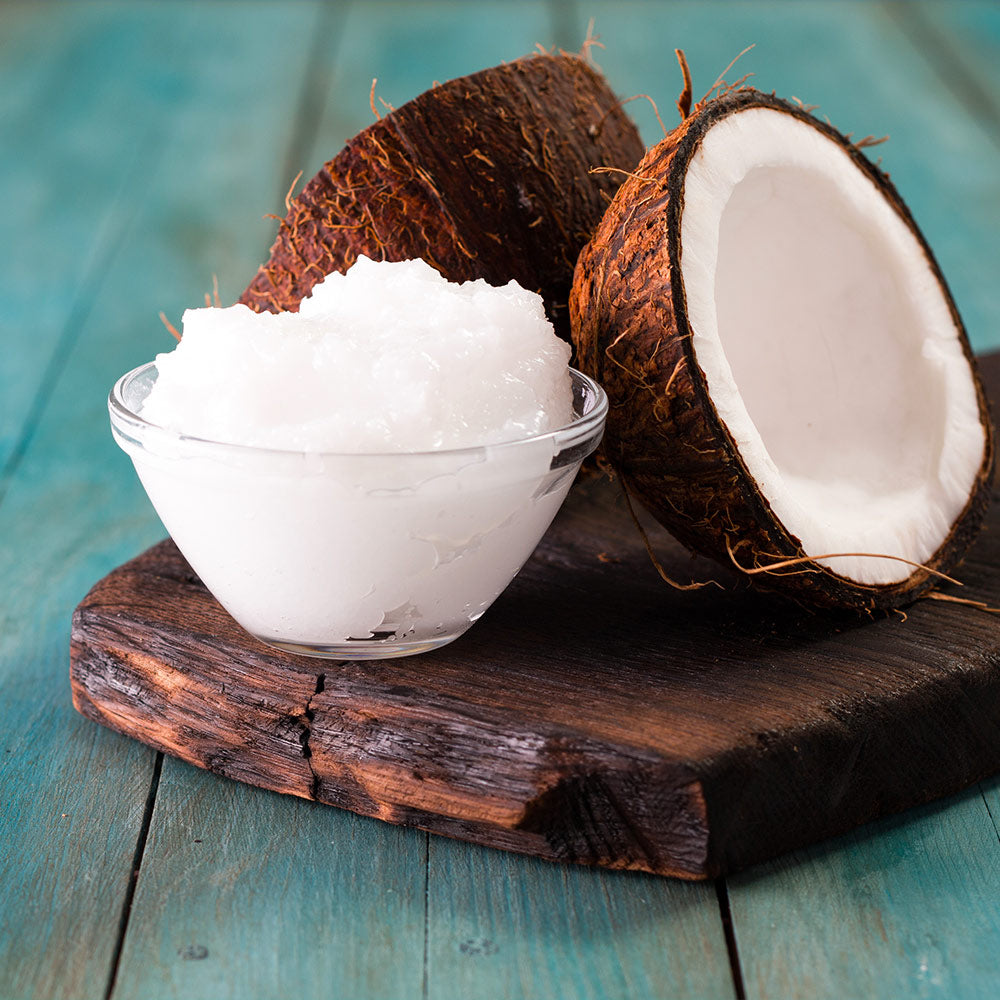Delicious Coconuts, Home-Grown
Why Coconut Palm Trees?
Large, savory coconuts make the Coconut Palm one of the most popular varieties in the world. Plus, they'll grow outdoors as well as they do inside a container, making it possible to grow your own coconuts, even if you live up North.
You can place your Coconut Palm outside on warm, sunny days, and bring it indoors during the colder months. Before you know it, you'll have tons of large coconuts with soft, creamy flesh and rich coconut milk. Our coconut trees will start producing fruit when there are around 2-3 feet of grey bark... much sooner than other coconut trees!
Coconut Palms arrive growing out of a coconut, which sits on top of their container for a unique, tropical look. Eventually, they grow into a mature palm with beautiful, ringed gray bark and a large crown filled with fronds that are covered with bright green leaflets.
And because they grow to fill the container they are planted in, they will fit perfectly inside your home, on your porch or patio. They will also grow indoors without making a fuss in low-light conditions. But no matter where you plant, Coconut Palms are tough, low-maintenance trees that have a high heat and drought tolerance and wind resistance.
Why FastGrowingTrees.com is Better
When you grow your own coconuts at home, you’ll save time and money and have a fresh, healthful snack, right in your backyard. A snack that’s delicious when eaten raw or added to your favorite recipes.
And when you order your Coconut Palm from Fast Growing Trees, you get these benefits plus the promise of healthy, faster growth. We've planted, grown and shipped your Coconut Palm with care...now, you reap the rewards with a better root system, fuller results, and faster growth.
All you have to do is plant your tree and enjoy your fresh coconuts. Order a few of your own today!
Looking for more palm trees to add to your collection? Check out our guide to popular .
Planting & Care
1. Planting: You don't have to immediately repot your plant - you'll only need to repot approximately every other year, once your Palm outgrows its shipped container or original pot. Increase the pot size by 2 inches each time you repot to accommodate new growth.
You will notice that your coconut will come with the seed visible make sure to leave the remaining coconut visible and not bury or remove it as this is how your tree is supposed to grow! Always repot up to the existing soil level will a well draining soil mixture.
For in-ground planting, you can expect your coconut to reach heights of 50-100 ft in ideal growing conditions compared to container-planted palms. Make sure to choose your outdoor location with the eventual height in mind.
2. Watering: Mist your Palm weekly if kept indoors in addition to regular watering – this ensures that its native humid climate is simulated in your home. If you're not sure when to water, simply check the soil about 2 inches down. If the soil is dry here, it's time to water.
FGT Tip: If fronds begin to yellow, it could be a sign of overwatering. If you see yellowed fronds, allow time for the soil to dry before watering your plant again. Browning fronds, however, mean that your Palm is not getting enough water and needs more. Using a well draining potting mix is key in getting this balance.
3. Pruning: Simply any fronds as they turn yellow or brown. This improves the look of your plant and creates clean space for healthier green fronds to grow.
4. Fertilizing: You can apply palm fertilizers that contain specific nutrients best suited for palms. If you prefer, you can also use a balanced fertilizer, such as an 8-8-8 formula, for quicker growth in spring and summer.
FAQs
How quickly do coconut palm trees grow?
Coconut palms grow at a moderate rate, putting on 1-2 ft. per year, provided that the needs of the plant are met.
Where do coconut palm trees grow?
Coconut trees naturally grow in tropical areas and will do best in Zones 10 or warmer with full sun and well-draining soil.
How many years does it take a coconut tree to bear fruit?
Fruit production can vary depending on the growing season, but you can expect coconuts on a 6-10 year old tree with more steady harvests as the tree ages.








Comment